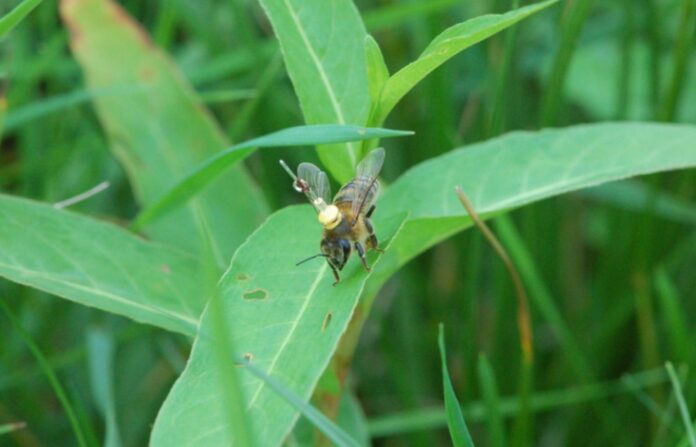Researchers have known for a century that honeybees are exceptional navigators. They can find their way around using their sense of smell, the sun, the pattern of polarized light in the sky, vertical landmarks that stand out in the view, and maybe even the Earth’s magnetic field.
They are also smart learners who can make connections between different memories to figure out rules.
A recent study published in Frontiers in Behavioral Neuroscience has demonstrated that honeybees, like early pilots, rely on the dominant linear landscape features to navigate and find their way back home. This finding suggests that bees use similar strategies as humans when it comes to orientation and spatial navigation.
“Here we show that honeybees use a ‘navigation memory’, a kind of mental map of the area that they know,” explains lead author Dr. Randolf Menzel, “to guide their search flights when they look for their hive starting in a new, unexplored area.
“Linear landscape elements, such as water channels, roads, and field edges, appear to be important components of this navigation memory.”
Menzel and his colleagues gathered 50 seasoned forager honeybees in late summer of 2010 and 2011 in the town of Klein Lüben in Brandenburg and affixed a 10.5-mg transponder to their backs.
They then set them free in a new test area that was too far away for the bees to remember. In the test area, there was a radar that could pick up on the transponders from up to 900 meters away.
The most remarkable feature of the testing location was a pair of parallel irrigation ditches that ran from southwest to northeast in a direction parallel to one another.
When honeybees are in an area they don’t know well, they fly in loops in different directions and over different distances, all centered on where they were released.
The researchers used a radar to follow each bee’s precise exploratory flight route for anything between 20 minutes and three hours. Throughout the experiment, the bees soared up to nine meters above the ground.
Foragers were taken from five hives, and their native environment surrounding hives A and B was similar to the experimental region in regards to the number, width, length, and angle of linear landscape components, mainly irrigation channels.
The areas around hives D and E were quite different from the test region, whereas the area surrounding hive C was in the middle.
In the test location, there were no vertical components that stood out or other markers that honeybees are known to use to navigate.
Menzel et al. began by simulating two distinct sets of random flight patterns, each of which was centered on the location of the release place and was produced using a unique technique. Since the flight patterns the researchers saw were very different from these, they decided that the honeybees didn’t just fly around randomly looking for food.
After that, the researchers employed sophisticated statistics to examine the flight direction and frequency throughout each 100 × 100 meter block inside the test region.
They demonstrated that honeybees spend an excessive amount of time swarming around the irrigation channels.
Analyses showed that these kept guiding the bees’ flights even when they were more than 30 meters away, which is the farthest such landscape features can be seen by honeybees.
This suggests that the bees remembered them for a considerable amount of time.
“Our data show that similarities and differences in the layout of the linear landscape elements between their home area and the new area are used by the bees to explore where their hive might be,” adds Menzel.
Crucially, machine learning techniques revealed that the test area’s irrigation channels were most useful for forecasting the exploratory flights of bees from hives A and B, less helpful for bees from hive C, and least helpful for bees from hives D and E.
This indicates that the bees sought to generalize what they observed in the test region to their navigational memory of their home area, which was likely based on linear landscape components.
The authors concluded that elongated ground structures are significant features of honeybees’ navigation memory, as flying animals, including bats and birds, recognize such structures in a map-like aerial view and consider them highly appealing as guiding structures. This finding underscores the importance of linear landmarks for navigation across multiple species.
Source: 10.3389/fnbeh.2023.1070957
Image Credit: E Bullinger, U Greggers, R Menzel
